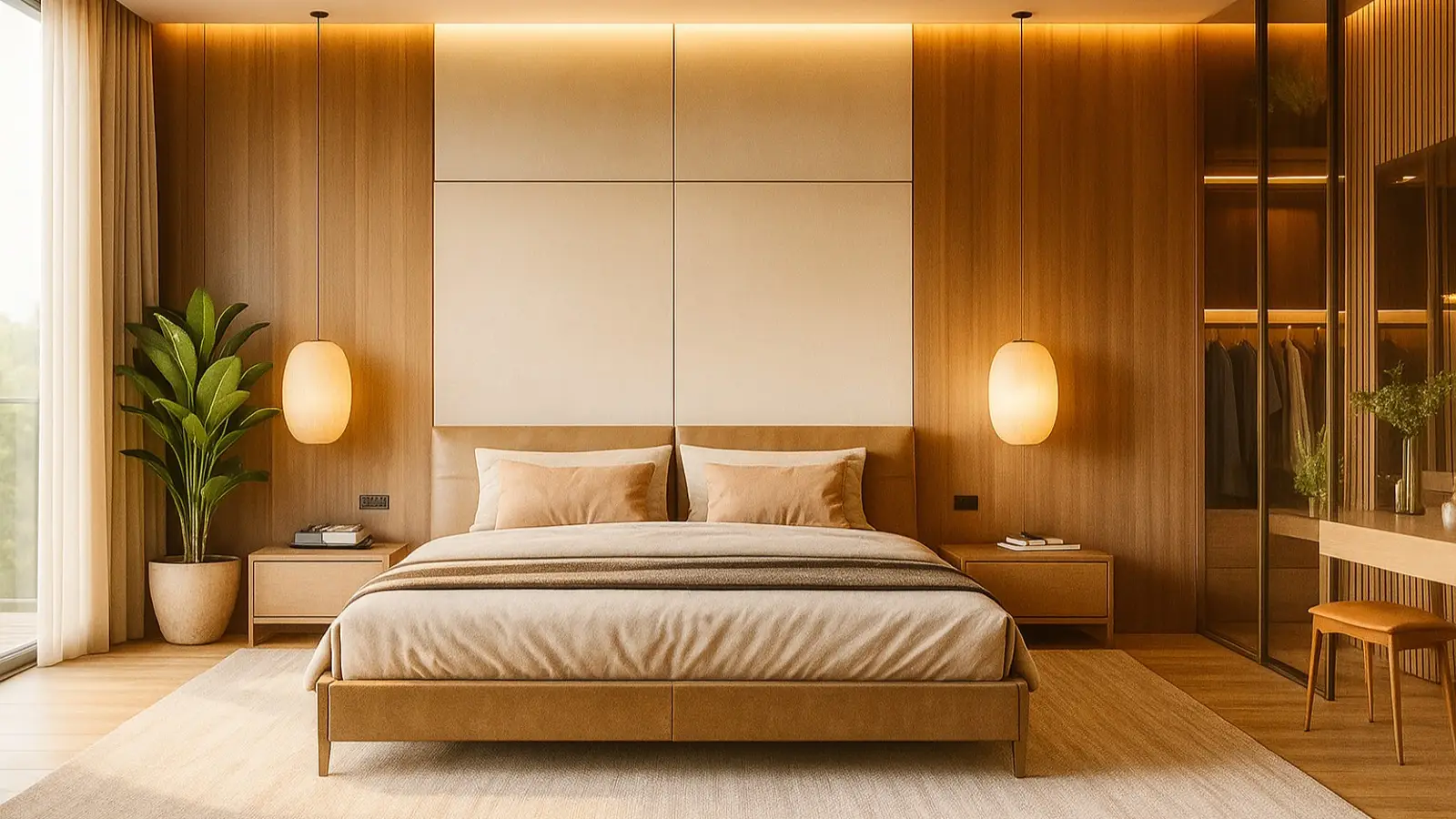https://boda.su/en/posts/id1051-best-bedroom-color-ideas-for-better-sleep-and-relaxation
Best Bedroom Color Ideas for Better Sleep and Relaxation
How to Choose the Perfect Bedroom Colors for Calm and Comfort
Best Bedroom Color Ideas for Better Sleep and Relaxation
Discover how the right bedroom colors improve sleep, reduce stress, and create harmony. Learn expert tips on soothing shades, accent tones, and Feng Shui design.
2025-11-05T11:01:50+03:00
2025-11-05T11:01:50+03:00
2025-11-05T11:01:50+03:00
Choosing Bedroom Colors: More Than Just Aesthetic
Picking the right color palette for your bedroom isn’t only about looks. Shades influence mood, sleep quality, and emotional balance. The right combination helps you unwind, prepare for rest, and maintain a calm mindset.
The Three-Color Rule
Designers often suggest sticking to no more than three colors.
Main color: Choose a neutral, soothing base — white, cream, beige, or a light peach tone.
Secondary color: Use it for furniture and décor elements; it should complement the main tone without standing out too much.
Accent color: Add energy with bold touches like red, green, blue, or electric tones. These accents bring life to the space but shouldn’t feel overwhelming.
Colors That Calm
Color therapy emphasizes that the bedroom should feature relaxing hues.
Blue and light blue tones help reduce stress, regulate blood pressure, and steady breathing. Soft, muted versions create a peaceful setting.
Green shades, from emerald to gray-green, promote relaxation and steady the heartbeat.
Pastel tones like pale pink, mint, and lilac foster comfort and serenity.
Deeper purples and burgundy hues introduce a sense of drama but may feel confining in smaller rooms.
Neutral and Warm Shades
Beige, cream, and warm gray tones bring harmony and coziness. They pair easily with various textures and materials — a key factor when creating a restful, inviting environment that supports deep relaxation.
Bright Accents for Energy
Colorful cushions, artworks, and rugs can instantly refresh the space. However, balance is essential — too many bold details can shift the mood from relaxing to overstimulating.
Feng Shui and Color
According to Feng Shui principles, the bedroom should embody peace and balance.
Favor neutral and calming hues such as white, beige, light green, and soft gray.
Keep bright reds and oranges for smaller accessories rather than wall colors.
Incorporate natural furniture materials to enhance comfort and promote restorative rest.
Color and Interior Style
Classic style: Dark furniture, neutral walls, and delicate textiles with burgundy or ivory accents.
Modern minimalism: A mix of white, gray-blue, and black, with room for distinctive prints or vibrant accessories.
Shabby chic: Soft pastels, vintage furniture, and floral fabrics for a nostalgic, cozy touch.
The Power of the Right Palette
A thoughtful color scheme does more than beautify your bedroom — it improves sleep, reduces stress, and supports a positive mood every day.
Bedroom Colors, Interior Design, Relaxation, Sleep Quality, Color Therapy, Feng Shui, Home Decor, Calming Shades, Neutral Tones, Accent Colors
2025
articles
How to Choose the Perfect Bedroom Colors for Calm and Comfort
Discover how the right bedroom colors improve sleep, reduce stress, and create harmony. Learn expert tips on soothing shades, accent tones, and Feng Shui design.
Generated by Dall-e
Choosing Bedroom Colors: More Than Just Aesthetic
Picking the right color palette for your bedroom isn’t only about looks. Shades influence mood, sleep quality, and emotional balance. The right combination helps you unwind, prepare for rest, and maintain a calm mindset.
The Three-Color Rule
Designers often suggest sticking to no more than three colors.
- Main color: Choose a neutral, soothing base — white, cream, beige, or a light peach tone.
- Secondary color: Use it for furniture and décor elements; it should complement the main tone without standing out too much.
- Accent color: Add energy with bold touches like red, green, blue, or electric tones. These accents bring life to the space but shouldn’t feel overwhelming.
Colors That Calm
Color therapy emphasizes that the bedroom should feature relaxing hues.
- Blue and light blue tones help reduce stress, regulate blood pressure, and steady breathing. Soft, muted versions create a peaceful setting.
- Green shades, from emerald to gray-green, promote relaxation and steady the heartbeat.
- Pastel tones like pale pink, mint, and lilac foster comfort and serenity.
- Deeper purples and burgundy hues introduce a sense of drama but may feel confining in smaller rooms.
Neutral and Warm Shades
Beige, cream, and warm gray tones bring harmony and coziness. They pair easily with various textures and materials — a key factor when creating a restful, inviting environment that supports deep relaxation.
Bright Accents for Energy
Colorful cushions, artworks, and rugs can instantly refresh the space. However, balance is essential — too many bold details can shift the mood from relaxing to overstimulating.
Feng Shui and Color
According to Feng Shui principles, the bedroom should embody peace and balance.
- Favor neutral and calming hues such as white, beige, light green, and soft gray.
- Keep bright reds and oranges for smaller accessories rather than wall colors.
- Incorporate natural furniture materials to enhance comfort and promote restorative rest.
Color and Interior Style
- Classic style: Dark furniture, neutral walls, and delicate textiles with burgundy or ivory accents.
- Modern minimalism: A mix of white, gray-blue, and black, with room for distinctive prints or vibrant accessories.
- Shabby chic: Soft pastels, vintage furniture, and floral fabrics for a nostalgic, cozy touch.
The Power of the Right Palette
A thoughtful color scheme does more than beautify your bedroom — it improves sleep, reduces stress, and supports a positive mood every day.

